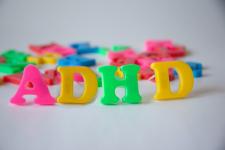MIT research suggests possibility of gene therapy to treat ADHD
By Lindsay Kalter,
Boston Herald
| 03. 23. 2016
Untitled Document
A new study from scientists at the Massachusetts Institute of Technology has provided new evidence of a genetic link for both attention deficit hyperactivity disorder and autism — which could lead to the use of cutting-edge gene therapy treatments for behavioral and developmental syndromes in the future, researchers say.
“One of the long-term goals is gene therapy where we can actually introduce genetic material that might be missing from the human,” said Michael F. Wells, a post-doctoral associate at the Broad Institute of MIT and Harvard University. “What’s exciting is that this is now a possibility, when it was pretty much science fiction 10 or 15 years ago.”
Doctors have recently looked to gene therapy as an experimental technique to treat diseases including cancer, ALS and Alzheimer’s disease. But disorders such as ADHD and autism have not been part of that discussion.
Wells and his colleagues found that genetically modified mice missing the “Ptchd1” gene — suspected to be absent in some people with ADHD, autism and intellectual disabilities — were more hyperactive and easily distracted than the...
Related Articles
By Josie Ensor, The Times | 12.09.2025
A fertility start-up that promises to screen embryos to give would-be parents their “best baby” has come under fire for a “misuse of science”.
Nucleus Genomics describes its mission as “IVF for genetic optimisation”, offering advanced embryo testing that allows...
By Hannah Devlin, The Guardian | 12.06.2025
Couples undergoing IVF in the UK are exploiting an apparent legal loophole to rank their embryos based on genetic predictions of IQ, height and health, the Guardian has learned.
The controversial screening technique, which scores embryos based on their DNA...
By Frankie Fattorini, Pharmaceutical Technology | 12.02.2025
Próspera, a charter city on Roatán island in Honduras, hosts two biotechs working to combat ageing through gene therapy, as the organisation behind the city advertises its “flexible” regulatory jurisdiction to attract more developers.
In 2021, Minicircle set up a...
By Vardit Ravitsky, The Hastings Center | 12.04.2025
Embryo testing is advancing fast—but how far is too far? How and where do we draw the line between preventing disease and selecting for “desirable” traits? What are the ethical implications for parents, children, clinicians, and society at large? These...




